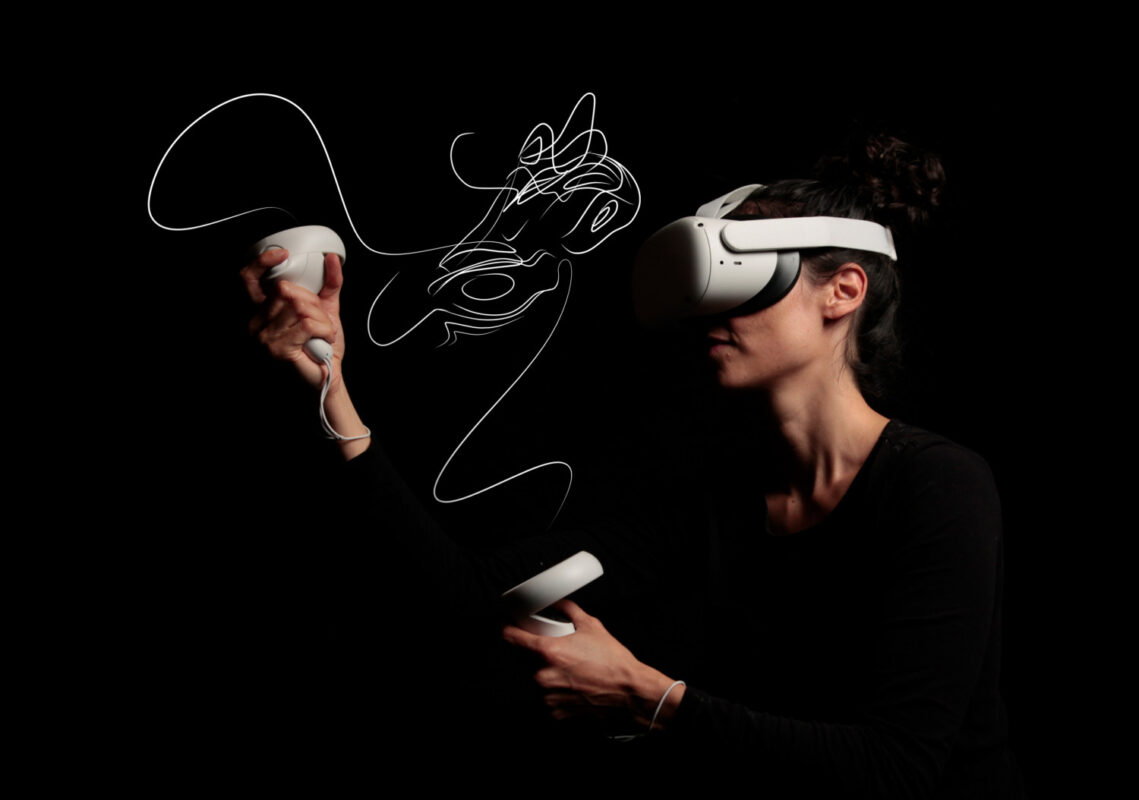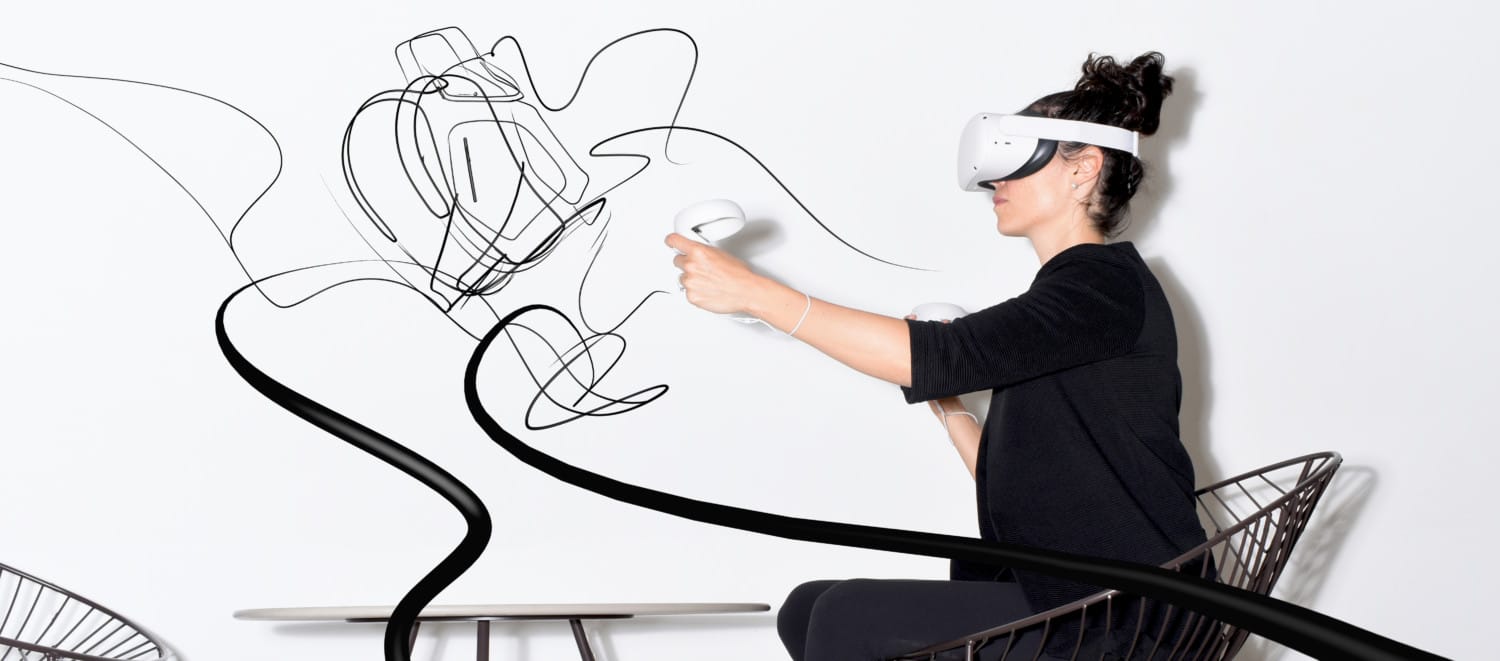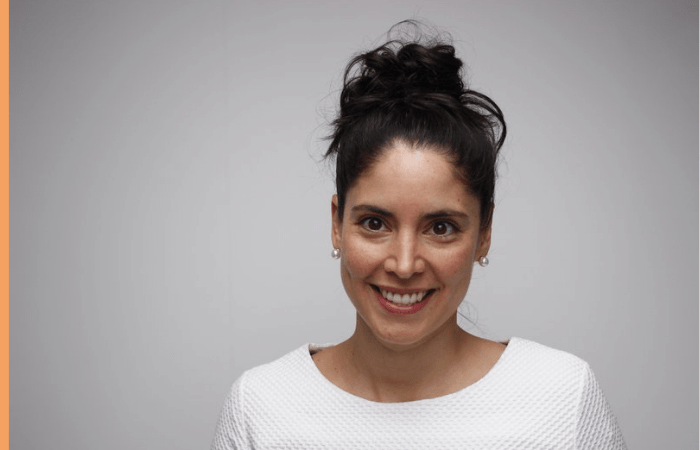Gravity Sketch, a design platform to create and collaborate in 3D.
.
Who are you?
I am Daniela Paredes an entrepreneur, innovation designer and co-founder of Gravity Sketch. I studied an undergraduate degree in industrial design – designing products that focus on human needs, considering ergonomics, aesthetics, and usability. After that I headed to London to study a joint masters in innovation design engineering at the Royal College of Art (RCA) and Imperial College London, where Gravity Sketch was born.
In 2019, I was fortunate enough to be one of nine women recognised in the Innovate UK awards, which celebrate women with ideas that could meet society’s biggest challenges set out in the government’s Modern Industrial Strategy. I was also named as one of the most innovative women in the UK and won the “Innovation in Future Mobility” award.
What did you do?
Whilst studying at Imperial College on their Innovation Design Engineering Programme, myself and fellow student and friend, Oluwaseyi Sosanya (CEO) worked on an academic project inspired by spatial intelligence about empowering people to create and communicate 3D ideas in the quickest and most intuitive way. We wanted to address challenges we had experienced between designers and engineers, particularly when it came to communicating and creating in 3D. Designing and developing physical products is complex, adding inefficiencies, time, and costs along the way, but there were no real collaborative solutions.
The results of the project were fascinating, and it went viral. It was clear that the world needed Gravity Sketch and the team felt it was our responsibility to provide the tools to empower creators, so we embarked on creating Gravity Sketch. Gravity Sketch is an intuitive 3D design platform which enables cross-disciplinary teams to create, collaborate and review in 3D. It allows designers to conceptualise their ideas from anywhere in the world, using spatial technology.
How did you do it?
I am lucky enough to have combined my love of art, science, and engineering to create software that is now widely used for 3D design in VR. This innovation - an easy-to-use multi-platform tool for creating 3D models, scenes, and artwork - allowed me to start my own business. Gravity Sketch was founded by me and fellow students whilst studying on RCA’s Innovation Design Engineering programme, a course run jointly between Imperial’s Dyson School of Design Engineering and the Royal College of Art. During our studies the team realised that with the right tools, many more great design ideas could be conceptualised and explored than was currently possible. The idea did not come from a yearning to be in the VR space, it came from a want to build the technology to help people push their creativity further. There was a lot of research and experimentation to understand how people think and communicate during a creative process and our main goal was to understand that. The technology we used was merely a consequence of the experience we wanted to create.
In the early days, it was challenging building a business from scratch. We were doing something very new, and the technology was not widely available at that time. It was difficult to raise investment, but our belief in the idea and the business kept us going and we built a strong community that pushed us to make it happen. In 2014, Gravity Sketch was awarded the James Dyson Fellowship run by the James Dyson Foundation charity, which provides patent funding and mentoring to promising RCA graduates who have invented something with commercial potential. This enabled us to continue our work and now we have a large following with global companies like Adidas and Ford using our product to innovate and change how they bring their products to life.
When did you start your company?
The company was founded in 2014 in London and has been growing ever since. In 2020 we raised a total of £5.4 million in funding and by the end of the year Gravity Sketch had experienced a 40% increase in demand for the platform and on-boarded over 100 design firms. By 2021 we had big clients using the software including Adidas, who launched the first trainer on the market ever designed in virtual reality. We also made Gravity Sketch Collab free to individual users to help open the design world to people from all backgrounds and democratise 3D design. Collab allows users to work together with other creators in a virtual studio. The likes of Ford and Volkswagen also use Gravity Sketch, alongside 60 universities and over 50,000 creative professionals worldwide.
Why are you innovating with this product, how will it change lives?
Gravity Sketch has completely transformed the industrial design process. It can be challenging to translate 3D ideas into a 2D sketch to communicate them effectively with stakeholders or colleagues. The 2D sketch then needs to be translated back into 3D to create the product. However, Gravity Sketch enables designers to create in 3D from the very start of the design process. This not only speeds up development, but also means spatial and ergonomic challenges can be solved in real-time. And by moving into 3D earlier in the creation process, the product is around 95% more accurately represented. This gives reviewers and stakeholders a chance to participate and feedback in the early stages of the design process, before the product is created or finalised, and helps avoid issues with the design further along the process. The immersive environment it provides, where the team can experience the model in a virtual studio, makes it significantly easier to present and communicate through the design pipeline.
Gravity Sketch has helped teams to feel empowered during the pandemic. It made it possible to collaborate with colleagues around the world in a virtual studio, making the review and approval process much more dynamic and efficient and improving sustainability.
Adopting pioneering technology like Gravity Sketch also helps businesses attract new design talent in an increasingly competitive market. Tools like Zoom and Miro provide great 2D ways of working together but with hybrid working becoming commonplace, organisations want to enable employees to work around 3D concepts and products in a virtual way, giving them more power to create and innovate. Spatial collaboration is particularly important in industries that work around products that will become physical goods.
The physical objects in our lives all begin with a creative team that gets together and talks around 2D sketches before moving onto 3D models and material samples. Prototypes are then created to understand the dimensions, proportions and materials of the product and teams all over the world meet to discuss and review it. A flight from the US to China for just a one-hour meeting produces up to 2.44 tonnes of CO2. However, introducing VR into the design process enables people to create and collaborate in 3D in real-time. The meeting is closer to a real-life experience, communicating in a virtual world around a 3D object, and people can be involved from anywhere in the world.
Where are you from?
I am from Mexico, but I moved to London as a working professional to study further and grow my skills. Since starting Gravity Sketch it made sense to stay here and continue to grow and develop the business with Oluwaseyi. But with the pandemic and family commitments I decided to move back home to Mexico City and work remotely.
We are now a hybrid business, with a team all over the world working together and collaborating through VR and our platform. We know that bringing a team together from wherever they are is important, which is why we are so passionate about creating the same experiences and connectivity for other creatives and businesses.



